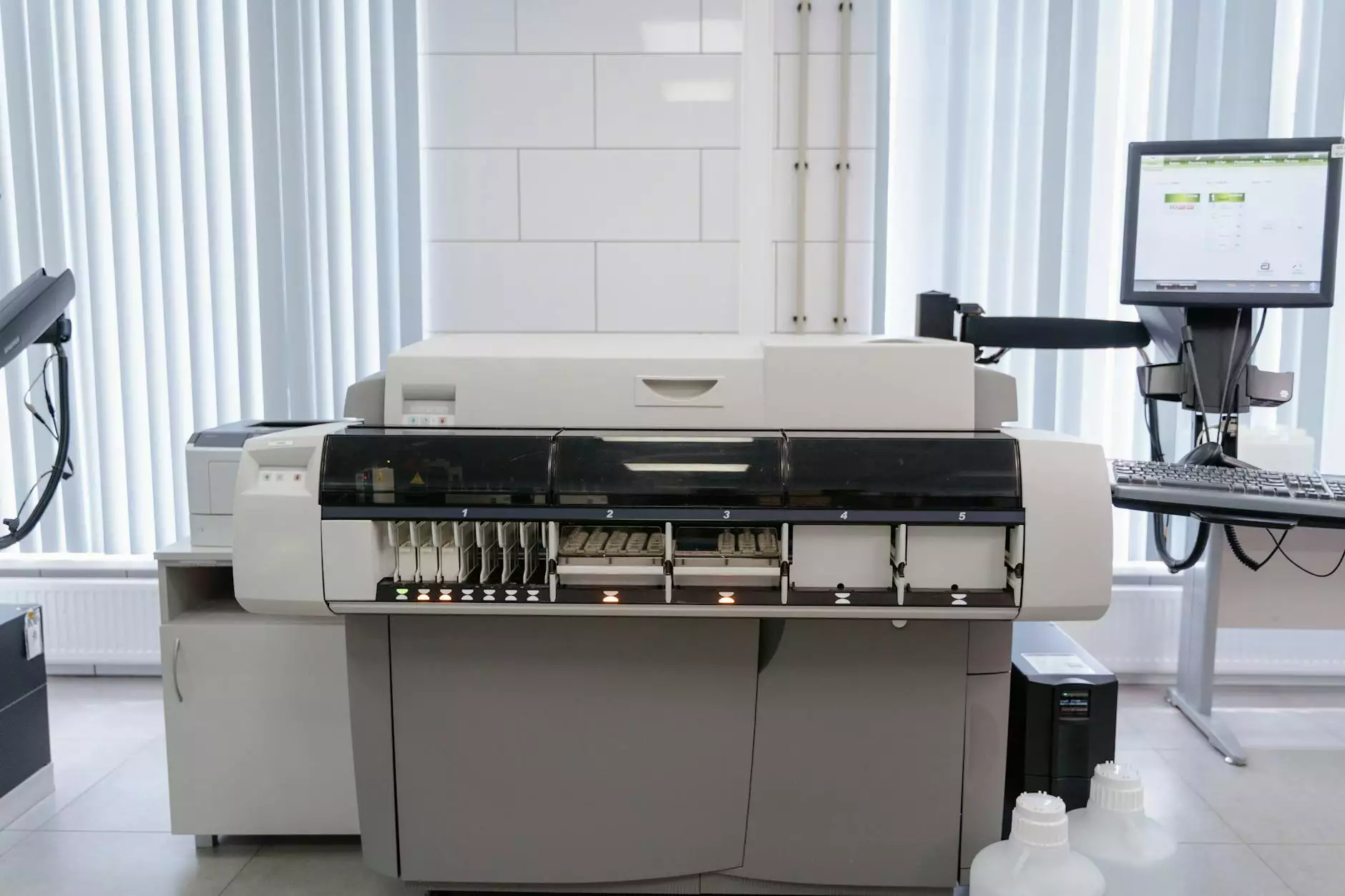Understanding Industrial Thermal Printers

Industrial thermal printers are specialized devices designed to meet the rigorous demands of high-volume print applications. These printers employ advanced thermal transfer and direct thermal printing technology to create high-quality labels, barcodes, tags, and more. In various industries—from logistics and manufacturing to healthcare and retail—these printers play a crucial role in enhancing operational efficiency and accuracy.
The Technology Behind Industrial Thermal Printers
At the heart of every industrial thermal printer is its innovative technology. Understanding how these printers function can greatly aid businesses in making informed purchasing decisions:
- Direct Thermal Printing: This method uses heat-sensitive media that darkens when exposed to heat. Ideal for short-lived labels, such as shipping labels and receipts, it requires no additional ribbons, leading to lower operational costs.
- Thermal Transfer Printing: This technique utilizes a heat transfer ribbon that melts ink onto the label or surface, creating durable, long-lasting prints that are resistant to fading, water, and smudging, making it suitable for labels that need to endure harsh conditions.
Key Benefits of Using Industrial Thermal Printers
Investing in industrial thermal printers brings multiple advantages that can significantly improve business operations. Here are some compelling benefits:
1. Enhanced Print Quality
With exceptional resolution capabilities, these printers produce clear and sharp labels, barcodes, and tags, ensuring that the printed information is easily readable and accurate.
2. Robust Durability
Industrial thermal printers are built to withstand challenging environments. Their durable construction allows them to function effectively in warehousing, manufacturing floors, and outdoor settings.
3. Cost-Effectiveness
While the initial investment might be higher compared to traditional printers, the long-term savings from lower maintenance needs and reduced consumable costs make them a cost-effective choice.
4. Versatile Printing Options
These printers can handle a wide range of materials, including labels, tags, and wristbands, giving businesses the flexibility needed to customize their printing solutions.
5. Faster Print Speeds
Designed for high-volume applications, industrial thermal printers can produce large quantities of printed materials in a shorter time frame, facilitating efficient workflow in busy environments.
Applications of Industrial Thermal Printers
The application potential for industrial thermal printers is vast and varied, covering numerous industries:
1. Logistics and Shipping
In logistics, accurate labeling is crucial. Industrial thermal printers create durable and scannable barcodes that ensure seamless tracking and inventory management throughout the shipping process.
2. Manufacturing
Manufacturers rely heavily on these printers for labeling parts and products, helping maintain quality standards and compliance with regulatory requirements.
3. Retail and Commerce
Retail businesses utilize industrial thermal printers to print price tags, shelf labels, and promotional materials quickly and efficiently.
4. Healthcare
In healthcare settings, these printers are essential for printing labels for specimen containers, patient wristbands, and medication, ensuring accurate identification and patient safety.
5. Food Industry
The food industry requires concise and clear labeling for products. Industrial thermal printers provide the necessary print quality and durability for packaging and expiry labels.
Choosing the Right Industrial Thermal Printer
When selecting the best industrial thermal printer for your business, consider the following factors:
1. Print Volume
Assess your print volume needs. Higher volume operations will require a printer with faster print speeds and larger media capacity.
2. Print Quality
Prioritize printers that offer high resolution for detailed prints, especially if your labels include tiny barcodes or intricate designs.
3. Media Flexibility
Support for various label sizes and materials is essential to meet diverse printing needs across different applications.
4. Connectivity
Ensure the printer has multiple connectivity options, such as USB, Ethernet, and wireless capabilities, to integrate smoothly into your existing systems.
5. Support and Service
Consider the vendor's reputation for customer support and service. Reliable after-sales support can reduce downtime significantly.
Integrating Industrial Thermal Printers into Your Workflow
Integrating industrial thermal printers into your operational workflow can enhance efficiency. Here’s how to ensure a seamless integration:
1. Evaluate Current Processes
Analyzing existing printing processes can help identify areas where industrial thermal printers can offer the most benefit by improving speed and accuracy.
2. Train Staff
Ensure your team understands how to operate and maintain the printers effectively. Proper training can prevent errors and reduce downtime.
3. Incorporate Inventory Management Systems
Combining printers with inventory management systems can streamline printing tasks and enhance tracking accuracy across your supply chain.
4. Schedule Regular Maintenance
Regular maintenance can prolong the life of your printers and maintain print quality. Implement a routine check-up plan to keep your equipment in top shape.
The Future of Industrial Thermal Printing
The landscape of industrial thermal printers is continuously evolving with advancements in technology. The future promises new features and innovations:
1. Smart Printing Solutions
With the rise of IoT, smart printers that can communicate and report on their status are becoming a reality, providing businesses with live data analytics.
2. Increased Customization
Print designs that cater to specific branding and compliance needs are likely to become more customizable, allowing businesses to reflect their unique identity.
3. Sustainable Printing Options
As sustainability becomes a priority, manufacturers are developing eco-friendly thermal printing materials and processes aimed at reducing environmental impact.
Conclusion
In summary, industrial thermal printers are an indispensable asset across various business sectors. Their ability to deliver high-quality, durable, and efficient printing solutions can significantly enhance business productivity while ensuring compliance and quality standards. By understanding the technology, benefits, applications, and future trends of these printers, businesses can make informed decisions that align with their operational needs and market demands.
For more information on industrial thermal printers and other printing solutions, visit omegabrand.com to explore the comprehensive offerings that can elevate your printing services.









